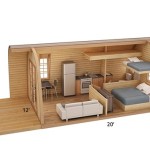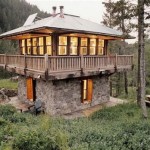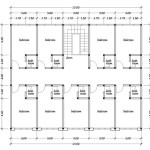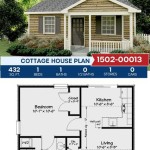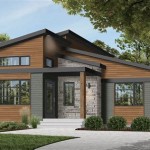House Plans For Small Beach Cottages: Maximizing Space and Coastal Living
Small beach cottages offer an appealing blend of affordability, low maintenance, and the opportunity to embrace a relaxed coastal lifestyle. Designing or selecting the appropriate house plan for a small beach cottage requires careful consideration of space optimization, functionality, and the unique environmental conditions characteristic of seaside locales. This article explores key aspects of house plans for small beach cottages, focusing on how to maximize limited square footage and create a comfortable and enjoyable living space.
Prioritizing Open Floor Plans and Multi-Functional Spaces
One of the most effective strategies for maximizing space in a small beach cottage is to adopt an open floor plan. This design approach eliminates unnecessary walls, creating a sense of spaciousness and improving flow between different living areas. By combining the living room, dining area, and kitchen into a single, unified space, homeowners can create a more inviting and functional environment.
Open floor plans also encourage natural light penetration, which is especially desirable in beach cottages seeking to capture the bright and airy ambiance of coastal living. Larger windows and strategically placed skylights can further enhance the natural light, minimizing the need for artificial lighting and reducing energy consumption.
Furthermore, multi-functional furniture plays a crucial role in maximizing space within a small beach cottage. Items such as sofa sleepers, convertible coffee tables, and storage ottomans can serve multiple purposes, reducing the need for excess furniture and freeing up valuable floor space. Built-in storage solutions, such as window seats with storage compartments or integrated shelving units, can also contribute to a more organized and clutter-free living environment.
Considering the potential for outdoor living, designing the open floor plan to connect seamlessly with a deck, patio, or porch can significantly expand the usable living space. Large sliding glass doors or French doors can provide easy access to the outdoors, blurring the lines between indoor and outdoor living areas and creating a more expansive and inviting atmosphere.
Optimizing Vertical Space and Loft Designs
When horizontal space is limited, exploring vertical space through the implementation of loft designs can be a practical and aesthetically pleasing solution for small beach cottages. Lofts can be used for a variety of purposes, including sleeping areas, home offices, or additional storage. Accessible by a ladder or compact staircase, lofts effectively utilize the often-overlooked vertical area of a cottage.
Before incorporating a loft into a house plan, it's crucial to consider building codes and regulations, as well as the overall structural integrity of the cottage. The height of the ceiling must be sufficient to ensure comfortable headroom in both the loft area and the space below. Proper ventilation and lighting are also essential considerations to create a functional and habitable loft space.
In addition to loft spaces, optimizing vertical storage solutions can further enhance space efficiency. Tall shelving units, vertical organizers, and overhead storage racks can help to keep clutter off the floor and maximize the use of available wall space. In kitchens, utilizing vertical space with hanging pot racks or wall-mounted utensil holders can free up valuable counter space.
Staircases, traditionally space-consuming elements, can also be optimized to provide additional storage. Incorporating drawers or cabinets into the staircase design can create concealed storage space for shoes, linens, or other household items. This approach maximizes functionality without sacrificing valuable floor area.
Designing for Coastal Conditions and Environmental Considerations
House plans for small beach cottages must take into account the unique environmental challenges posed by coastal locations. These include exposure to salt air, strong winds, and the potential for flooding. Selecting durable and weather-resistant materials is essential for ensuring the longevity and structural integrity of the cottage.
Materials such as cedar, composite decking, and fiber cement siding are well-suited for coastal environments due to their resistance to moisture, rot, and insect damage. Stainless steel or marine-grade hardware should be used for all exterior fixtures to prevent corrosion caused by salt air. Roofing materials should be selected for their wind resistance and durability, with options such as asphalt shingles, metal roofing, or tile roofing being suitable choices.
Raising the cottage above ground level on pilings or a raised foundation can help to mitigate the risk of flooding and protect the structure from water damage. This design feature also allows for better ventilation beneath the cottage, reducing the risk of mold and mildew growth. Careful consideration should be given to local flood regulations and building codes when designing the foundation.
Designing for energy efficiency is another important consideration for coastal cottages. Utilizing energy-efficient windows and doors, installing proper insulation, and incorporating passive solar design principles can help to reduce energy consumption and lower utility bills. Orienting the cottage to maximize natural sunlight and minimize exposure to prevailing winds can also contribute to energy savings.
The design of the cottage’s roof should also be carefully considered. A steeply pitched roof can help to shed rainwater quickly and prevent water damage, while a wider overhang can provide shade and protect the exterior walls from the elements. Rain gutters and downspouts should be properly installed to direct rainwater away from the foundation, preventing erosion and potential water damage.
Landscaping around the cottage should incorporate native plants and drought-resistant species that are well-suited to the coastal environment. This not only reduces the need for watering and maintenance but also helps to preserve the natural beauty of the surrounding area. Avoiding the use of chemical fertilizers and pesticides can further protect the coastal ecosystem.
Furthermore, integrating sustainable design elements, such as rainwater harvesting systems or solar panels, can enhance the environmental friendliness of the cottage and reduce its carbon footprint. These features not only contribute to a more sustainable lifestyle but can also increase the value of the property.
Ultimately, successful house plans for small beach cottages balance functionality, aesthetics, and environmental considerations. By prioritizing open floor plans, optimizing vertical space, and designing for coastal conditions, homeowners can create comfortable and enjoyable living spaces that embrace the unique charm of coastal living. Careful planning and attention to detail are essential for maximizing the potential of small beach cottages and creating a lasting investment for years to come.

Beach Cottage Plans

Beach House Plans Coastal Cottage Bungalow

Cottage Style House Plan 1 Beds Baths 569 Sq Ft 45 334 Plans

Coastal Style With 2 Bed Bath House Plans Small

Plan 047h 0077 The House

Beach House Plans Cottage

Small House Floor Plan The Plain Front Could Be Jazzed Up Considerably But It S A Livable Vacation Tiny Kits Plans
:max_bytes(150000):strip_icc()/brunswick-cottage-house-plan-sl-595-x-9dd622a6b154470796b78ed735276f18.jpg?strip=all)
7 Beach House Plans That Are Less Than 1 200 Square Feet

Plan 013h 0088 The House

Narrow Lot Beach Cottage Florida House Plans

